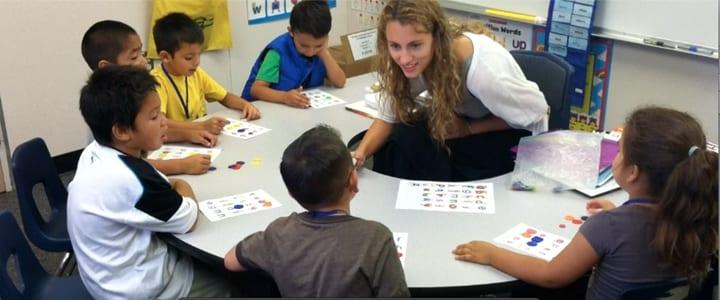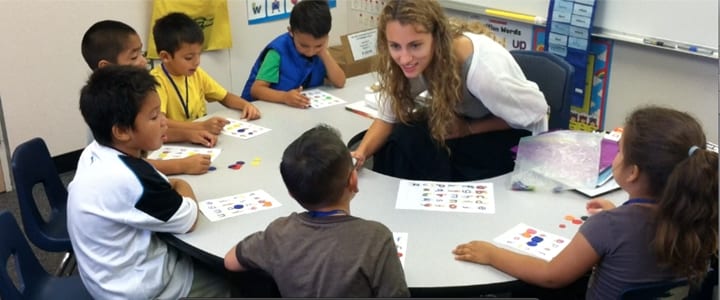Parents, you play a huge role in helping your child learn in between private tutoring sessions. Here are some ideas to help your English-learner work on their skills, from North Hollywood, CA tutor Brittany G…
When I first got my teaching credential, I was in suburban Connecticut. The majority of students in the classroom where I did my observations and student teaching were native English speakers, with a handful who spoke another language as well. When I moved to California, the most noticeable difference was the number of non-native English speakers in the classroom. This inspired me to get my Master’s of Education in TESOL, Literacy, and Culture from the University of San Diego. Through this program, I was given the opportunity to conduct an action research project investigating best practices for supporting Kindergarten English Language Learners in the mainstream classroom. These findings can be generalized to help parents and tutors uncover methods for supporting their English language learner children outside of the classroom as well in phonics and phonemic awareness.
Some Background on English Language Learners
Between 1980 and 2009, the number of children in the United States aged 5-17 who spoke a language other than English at home skyrocketed from 4.7 to 11.2 million, the equivalent of a jump from 10 to 21 percent of the population, according to the U.S. Department of Education. The California Department of Education website states that English learners make up 23.2 percent of the total enrollment in California public schools in 2010-11. Nearly 37.4 percent of the state’s public school enrollment speaks a language other than English at home, and the majority of these ELLs are enrolled in Kindergarten through sixth grade (California Department of Education [CDE], 2012).
Tools You Can Use
- AlphaFriends is an adorable program by Houghton Mifflin that introduces each letter with a corresponding song to highlight the letter-sound correspondence. If your child is having trouble matching letters to sounds, take some time during the week to introduce an AlphaFriend and practice singing the song. One teacher’s compilation is available here.
- Alphabet Bingo is a fun way to practice letter-sound correspondance. You can call out a letter, name the AlphaFriend, or choose another word starting with the same letter, and your child has to find and mark the picture on their Bingo card. Over time, you can increase the difficulty by having your child look for middle or end sounds, for instance, “Find the middle sound in the word ‘cat.’” Your child should break apart the word into /c//a//t/ and search for the letter “A.” Here’s a link to some printable Bingo cards.
- Let them write! Ask your child to write down their favorite food. Instead of being focused on the proper spelling, work with them to figure out what sounds they want to make and what letter best represents it. For example, I’ve asked students to write out “Ice Cream,” and the process looks something like this:
Teacher: What sounds do you hear first?
Student: I
Teacher: Okay, so what letter is that?
Teacher: What sound do you hear next?
Student: Ssss
Teacher: Great, lets write the /s/ sound.
(Student write “s”)
Teacher: Next up is /k/.
Student: That sounds like K…
When all is said and done, you might have Iskrem. This is a perfect opportunity to talk about how the letter “c” can make the sounds /s/ and /k/! Create a comfortable environment where your child feels comfortable to take risks and knows that even if they make a mistake, it’s better to try than not. Get your child talking and you will see amazing things!
Identifying letters and sounds are crucial skills for kindergarten and first grade students. Without these building blocks, it is very difficult to move forward into more advance reading and spelling skills. By setting aside 10-20 minutes a day to provide extra support, parents and tutors can help low-level English Language Learners (ELLs) catch up with their peers. It is so important to get involved early and help your child stay on track.
I hope some of my ideas can come in handy, and would highly recommend that you experiment on your own to see what other methods might work for your child.
 Brittany G. tutors in a variety of subjects in North Hollywood, CA, as well as through online lessons. She graduated from the University of Hartford in 2011 with a Bachelor of Science in Elementary Education, and has also received a Connecticut Teaching Certification for Elementary K-6 and a Certificate of Clearance to teach in California. Learn more about Brittany here!
Brittany G. tutors in a variety of subjects in North Hollywood, CA, as well as through online lessons. She graduated from the University of Hartford in 2011 with a Bachelor of Science in Elementary Education, and has also received a Connecticut Teaching Certification for Elementary K-6 and a Certificate of Clearance to teach in California. Learn more about Brittany here!
Suzy S.


